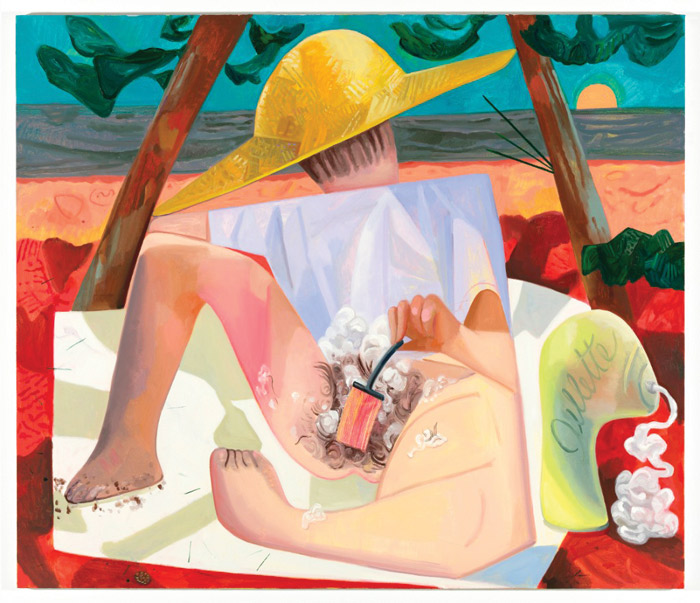Painter Dana Schutz’ exhibit mixes the experimental vigour of modernism with a personal and approachable style. The work has a clear relationship to cubism, representing figures in an atypically, fragmented manner, but it does not share the clinical eye that is representative of the movement for which Picasso is known. Rather than inviting the male gaze to dissect the female form, Schutz uses the cubist style to explore multiple aspects of her own persona. Works such as “Shaking, Cooking, Peeing” do an excellent job of representing the small but intense moments in life.
These pieces seem to burst with overwhelming movement, reminding viewers of the possibly traumatic nature of the everyday. Schutz’ paintings are extremely tactile, with paint clumped and protruding from the canvas. This emphasis on texture recalls another important modernist movement, abstract expressionism—paintings such as "God 6" allude to that movement, with the physical actions used in the process of painting foregrounded in the work. This technique contributes to the overall visceral sense of Schutz’ work; everything about these paintings is immanent, protruding outwards to shake the viewer. The exhibit makes an excellent use of nudity, using it less for its erotic potential than for its representation of raw humanity. Pieces such as “Shaving,” (pictured above), connect the relaxing setting of the beach with the private ritual of shaving pubic hair. This collision defamiliarizes both settings, bringing the personal into the public in a way that transcends any social norms.
Schutz’ exhibit has a certain youthfulness to it, featuring many figures who seem to be approximations of the human form. As opposed to cubism’s sharp edges, Schutz’ work is made mostly of rounded forms and ellipses. There is a cartoonish element to the works which contrasts with the grotesque subject matter. Works such as “Face Eater” are the most unnerving of the collection: They are undeniably childish, but the cannibalistic themes turn innocence into menace. Along with “Self Eater 3”, these works seem to point at difficulties of defining an identity, reminding the viewer that creation of something new often requires digestion of the old.
This tension between new and old is especially relevant in an exhibition that recalls early 20th century modernism. Schutz does an excellent job of pulling these movements into the 21st century, both through the more personal nature of her paintings and through the inclusion of computers and other signifiers of the information age. It also deals with aspects of female subjectivity that were often pushed to the sideline in the narrative of ‘high modernism.’
The works feel current and relevant; many of the pieces appear to be from within the last decade. Images online can’t convey the effect of caked-up oils protruding from the canvas—the images are worth seeing with their full bodies rather than flattened on a screen. Taking time with individual pieces in the collection is valuable; Dana Schutz emphasizes the relevance of painting as an artistic medium, showing a twisted and fragmented identity prevalent in modern art.
Dana Schutz is being shown between 5 to 9 p.m. on Wednesday evening at the Musée d’art contemporain de Montréal (185, Rue Ste-Catherine Ouest). Admission is $5 for students.









